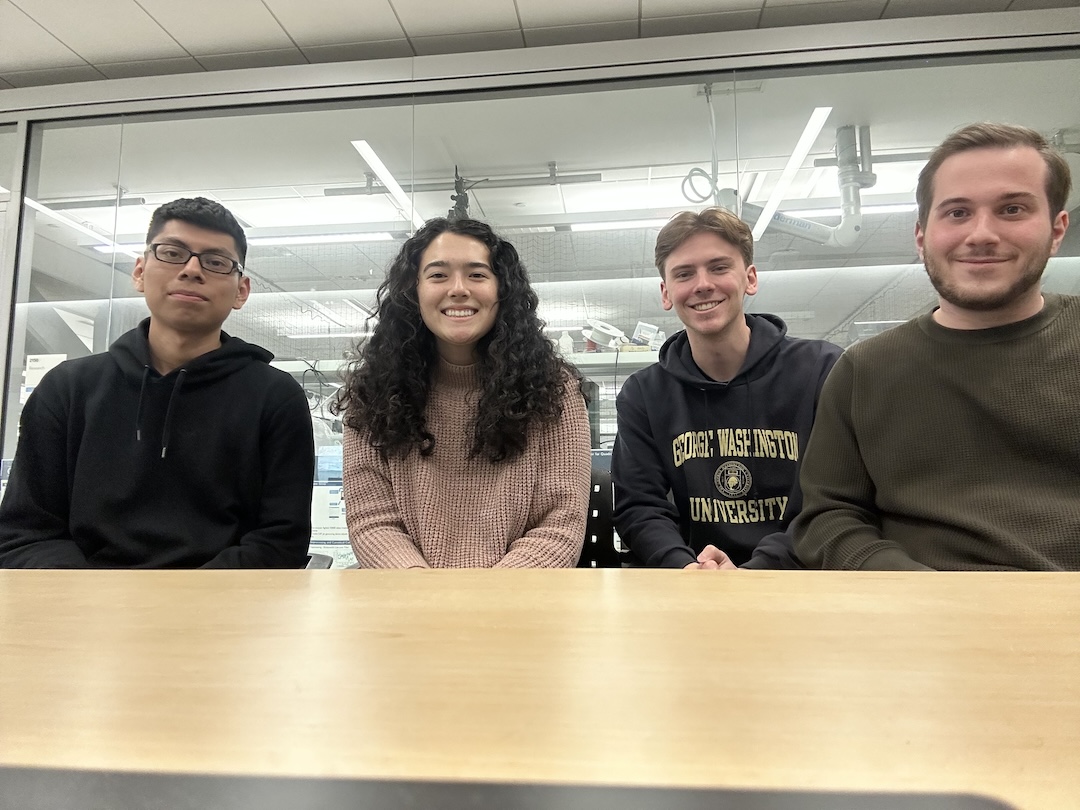URF SmartSpot

Project Team
Isabella D’Ambrosio
Logan Kalish
Jairo Sanchez
Dominic Savarino
Project Mentor(s)
Dr. Can Ertem, University Research Foundation
Bud Heidhausen, University Research Foundation
Professor Mitch Narins, GW Engineering
Project Sponsor(s)
University Research Foundation
Instructor(s)
Dr. Steven Shooter, MAE, GW Engineering
The goal for this project is to develop a self-stabilizing maritime spotlight that can autonomously track and illuminate channel markers with the aid of a chart plotter, eliminating the need for human input. Additionally, the spotlight will assist in “man overboard” situations by automatically pointing to the last known location of the person. Given its maritime application, ensuring environmental durability is also a key problem for the project. This project builds upon and seeks to improve several aspects of project work completed for previous courses. Specifically, the project aims to reduce the overall size of the spotlight and to develop a waterproof enclosure for the electronics. Another key problem the project tackles is refining the controls system, implementing a self-stabilization system and ensuring synchronized rotation of both motors.
Who experiences this problem in the world?
People potentially experiencing this problem in the world are boat captains and other maritime vehicle operators. First, the spotlight will assist operators piloting vehicles in low-light conditions by helping to both identify nearby objects in the water and track their location after detection. Second, in “man overboard” scenarios, the spotlight will automatically maintain the last known location of the person in need of rescue, thus providing operators with the location to search.
Why is this problem important?
The project aims to address an existing gap in maritime spotlight technology. Currently, there is no product that allows crew members to illuminate and track water-based targets, such as channel markers or buoys, and remain affixed to them as the vessel moves through the water. By automating this process, it increases crew member bandwidth and hastens the time to illuminate potential hazards in the water. Furthermore, this prototype sets the stage for additional development, primarily focusing on the applicability in assisting in “man overboard” scenarios. The eventual goal of the project is to adjust the control system such that if a button is pushed (indicating man overboard) the spotlight can track to the last known location of the person and illuminate the area where the person could be. Our prototype serves as the proof of concept to develop a product that can aid vessels and crew members, creating safer maritime travel environments.
What is the coolest thing about your project?
The coolest thing about our capstone project is the “intelligent” aspect of the prototype we are working to implement. Because the spotlight is meant for recreational boats, there are several design parameters relevant to the dynamics of boat operations. As a result, the spotlight must have a self-stabilizing mechanism that corrects the light beam if it is destabilized due to choppy waters or harsh weather conditions. Additionally, the spotlight must make use of the boat’s trajectory to accurately and precisely sweep intervals in the navigational history. This feature is especially important for “man overboard” missions where the vessel needs to locate a person or object that falls into the water and is not easily visible.
What were some technical challenges?
With that said, there are several technical challenges that must be addressed in order to meet these requirements. Due to the interdisciplinary nature of this project, challenges not only arise in mechanical engineering tasks but also in other subsystems such as the electrical engineering and computer science aspects. One challenge in mechanical engineering has been understanding the tradeoff between torque and RPM speed as the team has browsed motor options. Torque and speed have an inverse ratio and finding the balance between each has been highly essential and challenging to meet the prototype’s functional requirements. Another specific technical challenge has been learning and experimenting with a programming paradigm known as interprocess communications, which uses a modular shared memory for data communication. There are several electronic components that must be relaying information and making reactionary changes to constant updates. The challenge lies in decentralizing the electronics so that each sensor and input can work properly.

